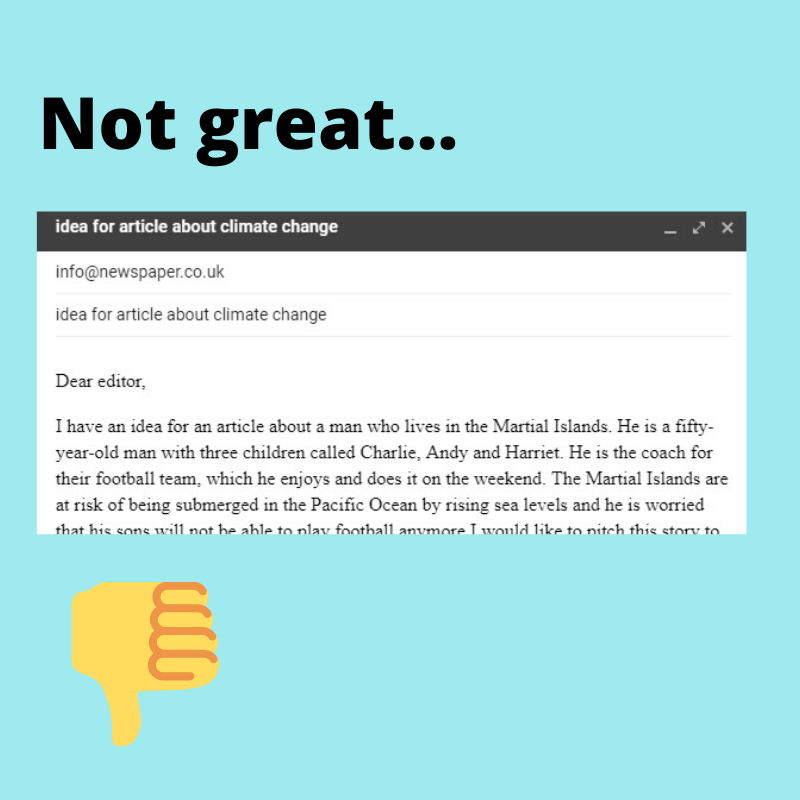There is no better feeling than pitching stories and getting your work published. And getting a byline in a good publication can help you get noticed when you’re taking your first steps into journalism.
But pitching your ideas to editors might seem a bit of a mystery. Here are some tips to get you started!
Choose the right publication…and the right person!
You may be sitting on a juicy exclusive or a gem of a feature but if it doesn’t fit the publication they are unlikely to buy it.
A story about a scientific discovery might work on a site like Gizmodo, whereas an interview with a mother affected by a terror attack will have a broader appeal.
Your pitch needs to be seen by the right person to make it to publication. Find out which editor, producer or commissioner will be deciding what makes the cut and target them specifically. (There is a similar rule for applying for work experience.)
The art of selling your idea
Make sure you stick to pitching guidelines. Editors will get hundreds of pitches a week and you are doing them a favour (and yourself) if you send your idea in the format they are looking for.
They will usually ask for a specific word count. Don’t go over this, or too far under, and remember that the pitch itself must be written well.
You are giving them a taste of your piece so hook them in with a strong introduction and don’t waste the opportunity with bad English!


How much of the story do I include?
You definitely need to get enough of the story across to get the piece noticed, but don’t send the whole thing (if you are following guidelines you probably won’t anyway).
Give them a reason to let you do the story, rather than taking it in-house. So keep a little back and make it clear that you have a strong relationship with your contacts. Your pitch should show that you have done enough research to know the story better than anyone else. You probably do!
Be persistent, but never rude
Sent a pitch and heard nothing? Fear not! Senior journalists’ inboxes are bursting at the seams with ideas.
Try sending a polite follow up email or asking who else might be able to take a look. Pitch story ideas regularly to editors and they are more likely to remember your name and therefore pay more attention to your ideas.
What are your top tips for pitching stories? Let us know in the comments!
Featured image courtesy of WOCinTech Chat via Flickr, with thanks

